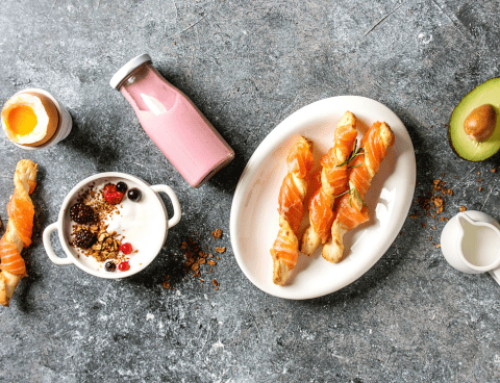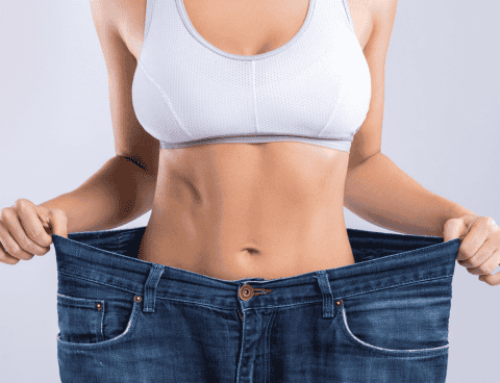6 Foods Every CrossFit Athlete Should Have in the Kitchen
Your workouts will only be as effective as the fuel you choose to power them with, and getting through a CrossFit workout is no easy task. Any advantage you can find is one you should take. To fuel up the best way possible, we spoke to registered dietitians who are also CrossFitters to get the inside scoop on the foods you need to have in your kitchen at all times.
Sweet Potatoes
Easy to prepare and packed with nutrients like vitamins A and C, sweet potatoes are a prime choice for CrossFitters before or after a workout. “They’re a nutrient-dense form of carbohydrate that supplies glucose to feed your central nervous system, brain and red blood cells,” says Patrick Sullivan, RD, who is affiliated with CrossFit Arenal.
Eggs
A staple in any athlete’s diet, eggs are highly recommended for CrossFitters. “In my opinion, eggs are the perfect food,” Sullivan says. ”They’re full of protein, B complex vitamins and omega-3 fatty acids. I recommend organic, pasture-raised eggs.”
Fatty fish
Fish is loaded with anti-inflammatory omega-3 fatty acids, which are of the utmost importance for athletes trying to recover quickly from workouts. “Wild Alaskan salmon is a great choice,” says Erica Giovinazzo, RD, of Brick CrossFit in New York City. “Other great options include sardines and herring. The smaller fish are further down on the food chain and so they have fewer toxins. The bigger the fish, the more likely they are to be slightly polluted.” Giovinazzo also points out that omega-3’s can help with “blood flow, memory, hair and skin [health].”
Coconut oil
“Please don’t fear fats,” Giovinazzo says. “Coconut oil is great to cook with because it can be cooked at a high temperature.” Replacing vegetable oil with options like coconut oil and olive oil will decrease your consumption of pro-inflammatory omega-6 fatty acids. “[Omega-6 fatty acids] are used to make processed foods—yuck,” Giovazzo says. “If we want to reduce our Omega-6 intake, then we need to decrease our consumption of these oils. We can do this by focusing on options like coconut oil and olive oil.”
Grass-fed meat
“CrossFitters generally want to build muscle, which means they need protein,” says Jeremy Mullins, RD, with CrossFit Thunder. “You have to be careful, though, because the majority of meat products found in grocery stores are from cows that were fattened with grain instead of their natural diet of grass. This means you are indirectly consuming the very grains you should already be avoiding.” If you want an overview of what the labels on your chicken actually mean, Consumer Reports has a fantastic description here.
Vegetables
It’s tough to narrow this list because they’re all so good for you. “Vegetables carry an inexpensive price tag, and are nutritionally stacked,” Mullins says. “I recommend cruciferous options such as cauliflower or broccoli, leafy greens such as spinach, kale and chard, and root vegetables like sweet potatoes and yams.”
“Non-starchy vegetables are loaded with nutrients that the body needs to function and perform optimally,” adds Amy Kubal, RD and co-author of The Paleo Foodie Cookbook.
RECOMMENDED FOR YOU
MOST POPULAR
6 Foods Every CrossFit Athlete Should Have in the Kitchen
Your workouts will only be as effective as the fuel you choose to power them with, and getting through a CrossFit workout is no easy task. Any advantage you can find is one you should take. To fuel up the best way possible, we spoke to registered dietitians who are also CrossFitters to get the inside scoop on the foods you need to have in your kitchen at all times.
Sweet Potatoes
Easy to prepare and packed with nutrients like vitamins A and C, sweet potatoes are a prime choice for CrossFitters before or after a workout. “They’re a nutrient-dense form of carbohydrate that supplies glucose to feed your central nervous system, brain and red blood cells,” says Patrick Sullivan, RD, who is affiliated with CrossFit Arenal.
Eggs
A staple in any athlete’s diet, eggs are highly recommended for CrossFitters. “In my opinion, eggs are the perfect food,” Sullivan says. ”They’re full of protein, B complex vitamins and omega-3 fatty acids. I recommend organic, pasture-raised eggs.”
Fatty fish
Fish is loaded with anti-inflammatory omega-3 fatty acids, which are of the utmost importance for athletes trying to recover quickly from workouts. “Wild Alaskan salmon is a great choice,” says Erica Giovinazzo, RD, of Brick CrossFit in New York City. “Other great options include sardines and herring. The smaller fish are further down on the food chain and so they have fewer toxins. The bigger the fish, the more likely they are to be slightly polluted.” Giovinazzo also points out that omega-3’s can help with “blood flow, memory, hair and skin [health].”
Coconut oil
“Please don’t fear fats,” Giovinazzo says. “Coconut oil is great to cook with because it can be cooked at a high temperature.” Replacing vegetable oil with options like coconut oil and olive oil will decrease your consumption of pro-inflammatory omega-6 fatty acids. “[Omega-6 fatty acids] are used to make processed foods—yuck,” Giovazzo says. “If we want to reduce our Omega-6 intake, then we need to decrease our consumption of these oils. We can do this by focusing on options like coconut oil and olive oil.”
Grass-fed meat
“CrossFitters generally want to build muscle, which means they need protein,” says Jeremy Mullins, RD, with CrossFit Thunder. “You have to be careful, though, because the majority of meat products found in grocery stores are from cows that were fattened with grain instead of their natural diet of grass. This means you are indirectly consuming the very grains you should already be avoiding.” If you want an overview of what the labels on your chicken actually mean, Consumer Reports has a fantastic description here.
Vegetables
It’s tough to narrow this list because they’re all so good for you. “Vegetables carry an inexpensive price tag, and are nutritionally stacked,” Mullins says. “I recommend cruciferous options such as cauliflower or broccoli, leafy greens such as spinach, kale and chard, and root vegetables like sweet potatoes and yams.”
“Non-starchy vegetables are loaded with nutrients that the body needs to function and perform optimally,” adds Amy Kubal, RD and co-author of The Paleo Foodie Cookbook.











